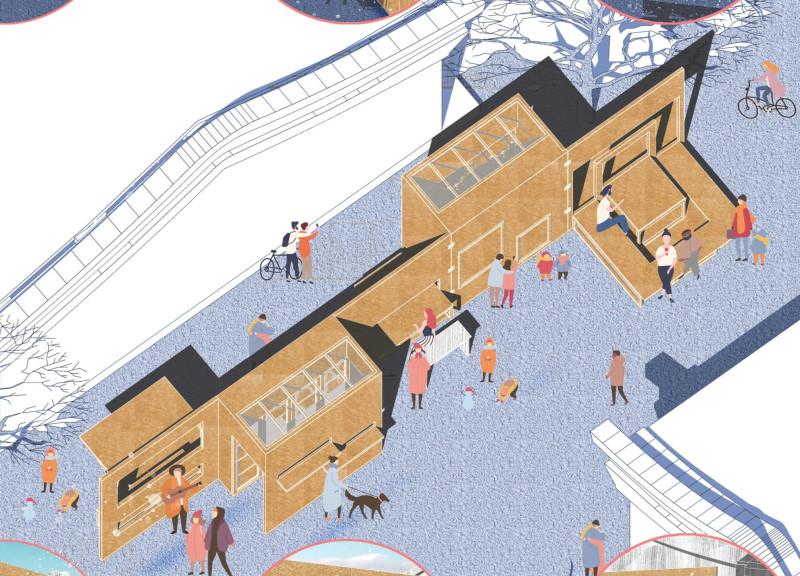5 key facts about this project
The project consists of modular units that are designed to be rearranged based on communal needs, promoting adaptability and flexibility. The architecture emphasizes openness and connectivity, fostering an environment where residents can come together for various activities such as reading, workshops, and exhibitions. By integrating natural elements and sustainable practices, "Folded Space" exemplifies a modern approach to urban living while respecting the historical context.
Innovative Design Approaches
A notable aspect of this project is its use of wheat straw panels as a primary material. These panels are lightweight and environmentally sustainable, providing both aesthetic value and thermal insulation. Additionally, the incorporation of transparent solar panels allows for energy generation while maintaining ample daylight within the interior spaces. This dual functionality underscores the project’s commitment to sustainable architecture.
The flexibility of the design is enhanced by movable furniture and partition systems, which can be adjusted to create spaces suitable for different functions. This adaptability allows for small group discussions or larger communal gatherings without the need for complete redesigns of the spatial layout. Such considerations reflect a deep understanding of the community's needs, promoting a culture of collaboration and shared experiences.
Community-Centric Facilities
The architectural design of "Folded Space" also prioritizes the enhancement of communal amenities. Designated areas for art displays and cultural workshops encourage local artisans and community members to engage with each other. These spaces are strategically integrated into the layout, providing accessibility and inviting participation. The relationship between indoor and outdoor areas is thoughtfully orchestrated, facilitating a seamless transition that allows nature to become an integral part of the experience.
The commitment to greenery within the design fosters a calming atmosphere, making the environment conducive to leisure and social interaction. By incorporating biophilic elements, the project not only addresses spatial needs but also enriches the overall quality of life for residents.
Readers interested in the deeper aspects of "Folded Space" can explore architectural plans, sections, and design concepts to gain further insights into the project's functional and aesthetic dimensions. Investigating these elements will provide a thorough understanding of how this project utilizes innovative ideas to respond to the complexities of urban living in Beijing's historic backdrop.


























